Cacholong is a type of gemstone that is known for its milky white appearance and is often used in jewelry and ornamental items. The term “cacholong” is derived from the Turkish word “akçalı,” which means “white.” This gemstone is a variety of the mineral chalcedony, which is a form of microcrystalline quartz.
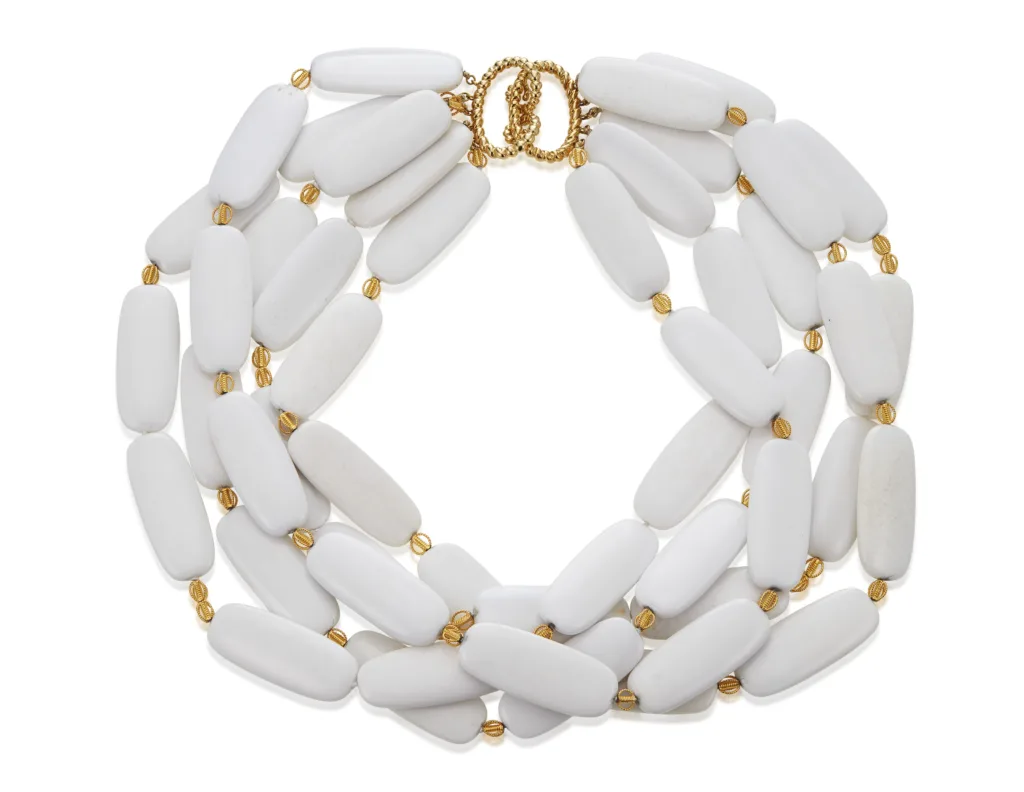
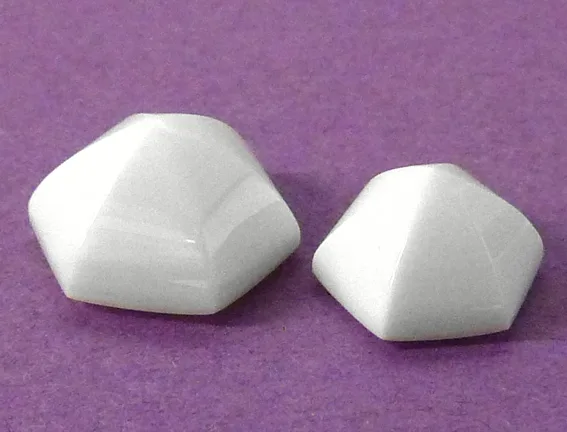
Key characteristics of cacholong include its opaque, whitish or milky color, and it is sometimes translucent. The stone is valued for its unique and understated beauty. Cacholong is commonly found in regions such as Kazakhstan, Uzbekistan, and other parts of Central Asia. It has been used for centuries in traditional jewelry and decorative arts in these regions.
In terms of metaphysical properties, cacholong is believed by some to have calming and balancing effects. It is associated with promoting emotional harmony and clarity of thought. As with many gemstones, cacholong may have cultural and historical significance in various regions where it is mined and used.
It’s worth noting that the popularity and recognition of gemstones can vary, and cacholong might be more commonly known in certain geographical areas or among specific communities.
Properties of Cacholong
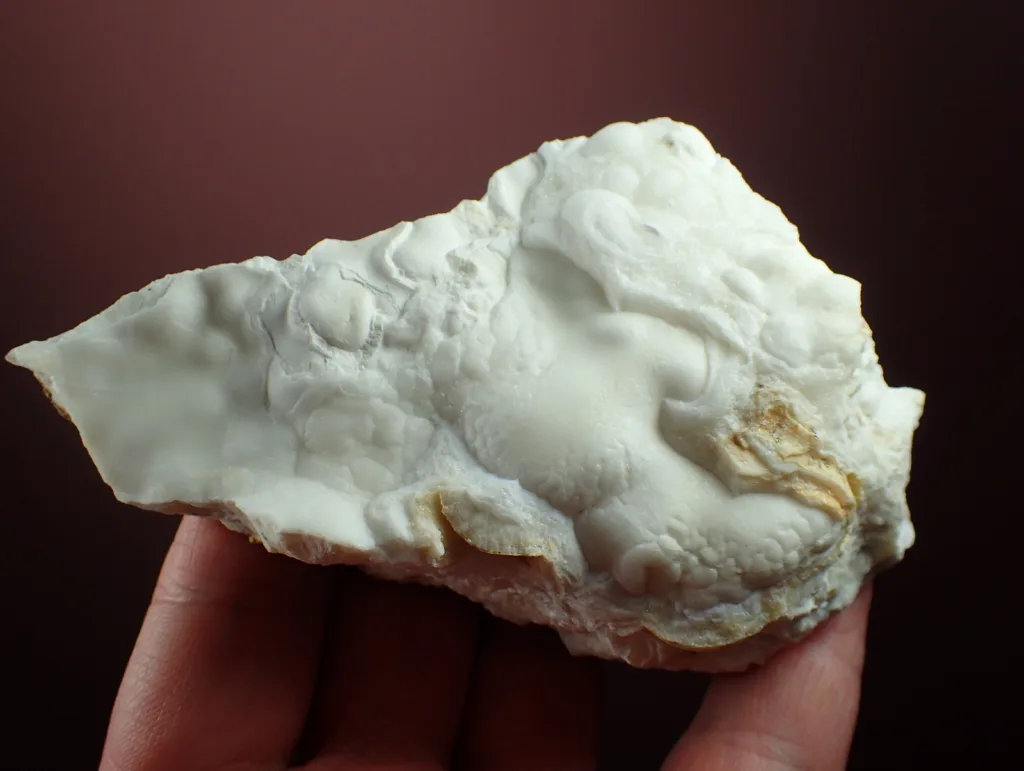
Cacholong, a variety of chalcedony, possesses several distinctive properties that make it unique and attractive for various purposes, including jewelry and ornamental uses. Here are some key properties of cacholong:
- Color:
- Cacholong is known for its milky white to creamy coloration. The stone is typically opaque but can sometimes exhibit translucency.
- Hardness:
- Cacholong has a hardness of 6.5-7 on the Mohs scale. This makes it relatively durable and suitable for use in jewelry.
- Luster:
- The luster of cacholong is usually waxy or vitreous, contributing to its aesthetic appeal when polished.
- Formation:
- Cacholong is a type of chalcedony, a cryptocrystalline form of quartz. It forms in a variety of environments, including sedimentary, metamorphic, and igneous rocks.
- Transparency:
- While cacholong is generally opaque, certain pieces may exhibit translucency when held up to light.
- Cutting and Carving:
- Cacholong is often cut and carved into various shapes for jewelry, beads, and ornamental items. Its milky appearance can create unique and elegant designs.
- Origin:
- The primary sources of cacholong include regions in Central Asia, such as Kazakhstan and Uzbekistan.
- Metaphysical Properties:
- In metaphysical beliefs, cacholong is associated with calming and balancing effects. It is thought to promote emotional well-being and clarity of thought.
- Cultural Significance:
- Cacholong has historical and cultural significance in regions where it is found. It has been used in traditional jewelry and decorative arts for centuries.
- Jewelry Use:
- Cacholong is often set into rings, earrings, pendants, and other jewelry items. Its subtle, white color makes it versatile and suitable for various styles.
It’s important to note that the perceived metaphysical properties of gemstones are based on beliefs and traditions rather than scientific evidence. While cacholong is appreciated for its aesthetic qualities, individual experiences with the stone’s metaphysical aspects may vary.
Geological Occurrence
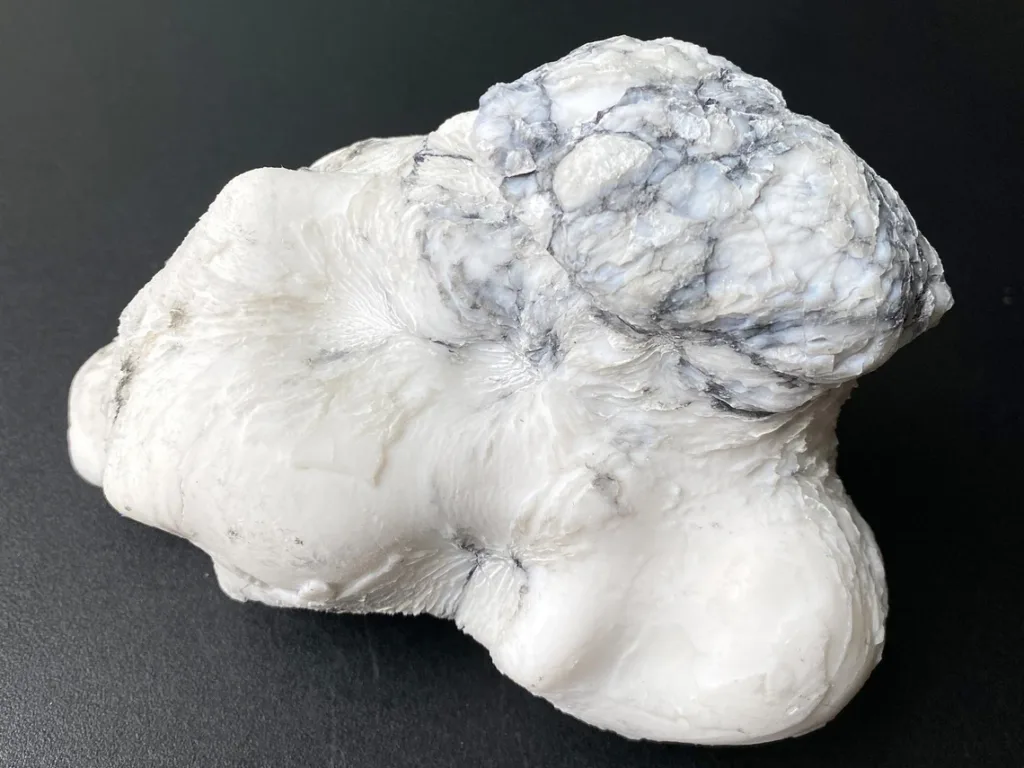
Cacholong is primarily found in regions with specific geological conditions conducive to the formation of chalcedony. The gemstone has been historically associated with Central Asian countries. Here are some notable locations where cacholong is found:
- Kazakhstan:
- Cacholong is known to occur in Kazakhstan, and some deposits in this country have been a source of the gemstone.
- Uzbekistan:
- Uzbekistan is another Central Asian country where cacholong is found. The gemstone has been mined in certain regions of Uzbekistan.
- Russia:
- Some cacholong deposits are reported in parts of Russia, particularly in areas with geological conditions suitable for the formation of chalcedony.
- Central Asia:
- In addition to Kazakhstan and Uzbekistan, other countries in Central Asia may also have occurrences of cacholong, as the geological conditions in the region are conducive to the formation of chalcedony.
It’s important to note that gemstone deposits can be localized and may not be widespread across an entire country. Gemstone mining can also be influenced by factors such as geological processes, mining practices, and local trade patterns.
Gemstone deposits are typically found in specific types of rock formations, such as sedimentary, metamorphic, or igneous rocks. The presence of cacholong is often associated with these geological settings, and prospectors and miners explore these areas to extract the gemstone.
As with any gemstone, the availability and quality of cacholong can vary, and new deposits may be discovered over time. Additionally, the commercial trade of cacholong may involve various countries as the gemstone is processed and used in jewelry and other decorative items.
Modern Uses and Applications
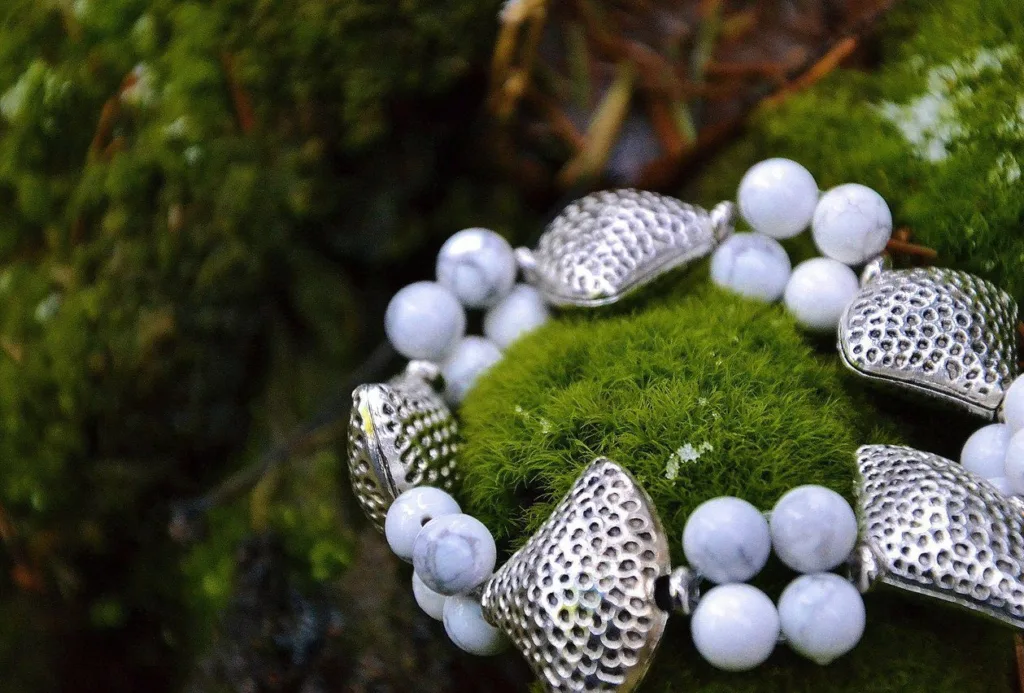
Cacholong, with its milky white appearance and unique properties, is used in various modern applications, particularly in the field of jewelry and ornamentation. Here are some modern uses and applications of cacholong:
- Jewelry Design:
- Cacholong is a popular choice for jewelry designers, and it is often used in crafting rings, earrings, pendants, and other pieces. Its white color and versatility make it suitable for both contemporary and traditional designs.
- Beads and Cabochons:
- The stone is commonly shaped into beads and cabochons, providing jewelry makers with a range of options for creating intricate and distinctive designs.
- Carvings and Sculptures:
- Due to its relative hardness and workability, cacholong is used for carvings and sculptures. Artisans create detailed carvings and figurines, showcasing the stone’s aesthetic appeal.
- Collector’s Items:
- Some cacholong specimens are collected by gemstone enthusiasts and collectors who appreciate the stone for its unique appearance and potential rarity.
- Metaphysical and Healing Jewelry:
- Like many gemstones, cacholong is believed by some to have metaphysical properties, including promoting emotional balance and clarity of thought. As a result, it may be used in jewelry designed for holistic and metaphysical purposes.
- Fashion Accessories:
- Cacholong is integrated into various fashion accessories, including brooches, cufflinks, and tiepins, providing a touch of elegance to accessories.
- Home Decor:
- Polished cacholong pieces or carvings may be used in home decor, such as inlays, tabletops, or decorative items, adding a touch of sophistication to interior spaces.
- Lapidary Art:
- Lapidaries and gemstone artists use cacholong to create intricate lapidary art pieces, showcasing the natural beauty of the stone through cutting and polishing.
- Custom and Artisanal Jewelry:
- Cacholong is often favored by artisan jewelers and those who appreciate custom-designed jewelry. Its unique appearance allows for the creation of one-of-a-kind pieces.
While cacholong may not be as widely known as some other gemstones, its distinctive aesthetic qualities make it a sought-after material in certain jewelry and artistic circles. The stone’s historical and cultural significance, coupled with its modern applications, contribute to its enduring popularity in the world of gemstones and jewelry.




































